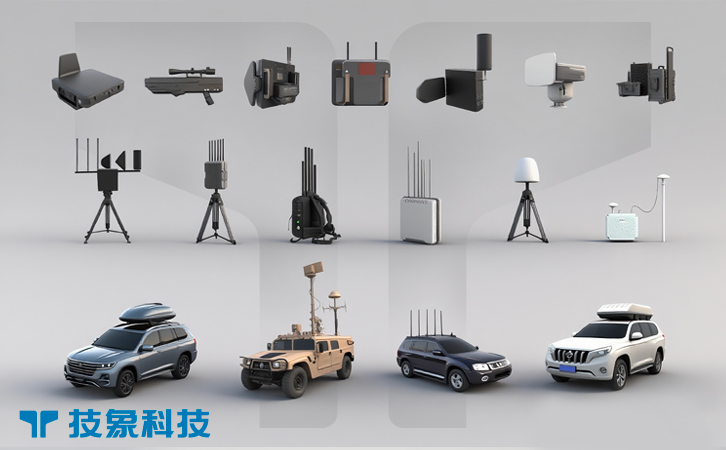Yes, there are multiple devices and systems designed specifically to disable drones. These technologies, collectively termed Counter-Unmanned Aerial Systems (C-UAS), have evolved significantly to address threats from unauthorized drones. Below is a comprehensive overview based on current (2025) technologies and regulations:

1. Detection Systems
Anti-drone systems first identify drone presence using multi-sensor fusion:
Radar: Detects drones via radio waves (e.g., Blighter’s AUE700 3D radar for small drones) .
RF Scanners: Identify radio communications between drones and controllers (e.g., Dedrone’s RF sensors) .
Acoustic Sensors: Detect propeller noise, useful in urban clutter .
Electro-Optical/Infrared (EO/IR) Cameras: Provide visual confirmation day/night, enhanced by AI .
2. Countermeasure Technologies
Once detected, drones are neutralized using:
Electronic Jamming:
RF Jammers: Disrupt control links (2.4 GHz/5.8 GHz), forcing drones to land or return home (e.g., DroneGun Tactical) .
GPS Spoofers: Send false coordinates to misdirect navigation (e.g., GPS-SDR-SIM tools) .
Kinetic Methods:
Net Guns/Interceptor Drones: Physically capture drones (e.g., Fortem’s DroneHunter) .
Laser Systems: Destroy drones via directed energy (e.g., Rafael’s Iron Beam, 10–100 kW) .
Cyber Takeover: Hack drone controls to force landings (e.g., AI-driven protocol hijacking) .
High-Power Microwaves (HPM): Disable electronics using electromagnetic pulses (e.g., THOR system) .
3. Examples of Commercial Systems
Handheld Jammers:
EDM4S SkyWiper (Lithuania): Portable RF jammer (500 m–3 km range) for military/security .
Kvertus G-6+ (Ukraine): Tactical backpack jammer for frontline use .
Integrated Platforms:
Drone Dome (Israel): Combines radar, jamming, and lasers .
SKYctrl (Poland): Modular system with radar, acoustic sensors, and interceptors .
4. Legal Restrictions
Anti-drone devices face strict regulations globally:
United States:
RF jammers are illegal for civilians (FCC violations). Only federal agencies (FAA, DHS) can deploy them .
European Union:
EASA restricts jammers; member states vary (e.g., France allows law enforcement use) .
China:
Military/police use only; civilian deployment prohibited .
Note: Detection systems (without jamming) are generally legal for private use.
5. Limitations and Challenges
Autonomous Drones: Resistant to jamming (use fiber-optic/IMU navigation) .
Collateral Damage: Jamming disrupts nearby communications; lasers risk fires .
Cost: Military systems (e.g., Drone Dome) exceed 5.000) are more affordable .
Conclusion
Devices to disable drones exist across categories: jammers (e.g., DroneGun), kinetic interceptors (e.g., net-capture drones), and directed-energy weapons (e.g., lasers). Their effectiveness depends on the drone’s autonomy and countermeasures. However, legal barriers limit civilian access, with most advanced systems restricted to government/military use. For legal alternatives, detection-only tools (e.g., DJI AeroScope) are widely available .



